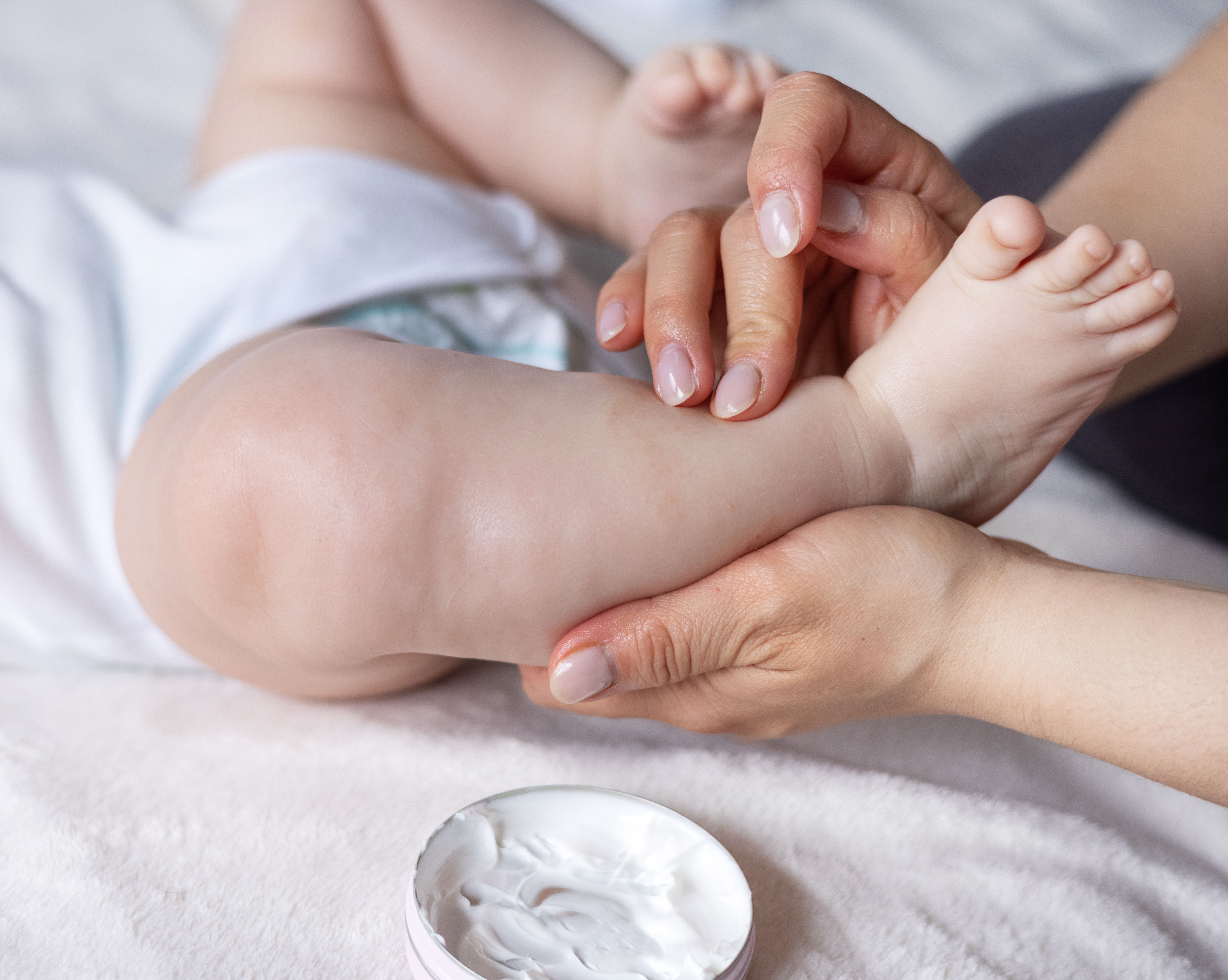Strategies and tips to tackle dry skin in children
Family history, seasonal change, swimming, and several other factors can contribute to dry skin, according to the Society for Pediatric Dermatology.
Strategies and tips to tackle dry skin in children | Image Credit: © Alexandra - © Alexandra- stock.adobe.com.

The Society for Pediatric Dermatology (SPD) recently released several tips to prevent dry skin in children, teenagers, and adults. Ranging from day-to-day hygiene routines to recommended laundry procedures, these tips can be used to help children of any age combat dry skin.
“Many people, especially children, have sensitive skin,” said Peter Lio, MD, FAAD, board member, National Eczema Association. “This can mean a few different things, but 1 meaning is that the skin may be a bit more susceptible to swings in the weather, irritants in the environment, and allergens such as fragrance. A weakened skin barrier means that water can more easily escape resulting in dry skin, and that allergens, irritants, and even pathogens can enter more easily.”
According to SPD, certain patients may notice dry skin more in the fall or winter, while cool, dry climates can also contribute to dry skin. With summer around the corner, there are things to consider.
“While the cold, dry air of winter is known for being brutal on the skin, summer can be difficult for many as well,” Lio said. “The rapid shifts from the hot, sweaty, and humid environment outside to the dry, air-conditioned indoor environment can be tough on the skin barrier. The use of sunscreens, while certainly recommended to protect the skin from ultraviolet damage, can result in irritants and allergens applied to sweaty skin repeatedly over the summer.”
As children get ready for summer fun in the pool, SPD notes that pool chemicals can contribute to dry skin.
“Swimming, while great for health and certainly lots of fun, can also be hard on the skin,” Lio said. “Chemicals in the pool, the cycling between wet and dry, and changes in bathing practices in the summer can all collude to take a huge toll on the skin. Always wash with fresh water after swimming in a pool, lake, or ocean to rinse off and then moisturize to protect the skin.
SPD states skin needs proper care, including gentle cleansing and careful moisturizing. When it comes to bathing, SPD says to avoid hot or cold water, and use lukewarm water instead. Avoid using antibacterial soap, as fragrance-free gentle cleansers are best for children with dry skin. Bubble baths should also be avoided. Bubbles, like soap, can remove the skin’s natural oils. Without these oils, the skin cannot keep moisture, potentially leading to dry skin. Applying moisturizer quickly after bathing can help combat dry skin, as SPD recommends applying within 3 minutes. This method, sometimes called “soak and seal,” helps solidify the moisture from bath water. To further help, put on cotton pajamas or other types of soft clothes.
Moisturizer application to those with dry skin is most important after bathing, though using it “a few times a day on the whole body” can also be done. Thicker moisturizers that are ointments, such as petrolatum or petroleum jelly, and fragrance-free creams work better than thinner moisturizers such as lotions. However, if patients have been prescribed a medicated cream or ointment, only apply to the affected skin areas as instructed by a health care professional.
“While there are dozens of great moisturizers, and probably hundreds of very good ones, the most important thing is to find one that suits one's own skin and that one will actually use,” Lio said. Further, he suggests finding a moisturizer designed for sensitive skin or eczema, one without a fragrance, and one that is, “as thick as is comfortable. Ointments tend to be better and have fewer ingredients, but some won’t use them. Lotions and gels can be helpful, but sometimes can actually make things a bit worse. Most importantly, try different ones until you find one you like and that works for you. There is no ‘best’ moisturizer, only the best one for an individual at a given time.”
The SPD says to avoid laundry products with added fragrance or color. Using unscented hypo-allergenic laundry products is better. Avoiding dryer sheets is also recommended, as even unscented sheets have “softening chemicals that may irritate sensitive skin,” according to SPD. If the skin is still dry or sensitive, parents can try double-rinsing clothes to help fully remove laundry soap. Harsh wool and other tight or “scratchy” fabrics should be avoided.
Reference:
Dry skin patient perspectives. Society for Pediatric Dermatology. Accessed May 26, 2023. https://pedsderm.net/site/assets/files/1028/spd_dry_skin_care_bw_1.pdf
Recognize & Refer: Hemangiomas in pediatrics
July 17th 2019Contemporary Pediatrics sits down exclusively with Sheila Fallon Friedlander, MD, a professor dermatology and pediatrics, to discuss the one key condition for which she believes community pediatricians should be especially aware-hemangiomas.